How to water a pumpkin outdoors: step-by-step instructions for novice gardeners
Pumpkin is a moisture-loving crop that requires moisture at all stages of growth. Through irrigation, the plant receives nutrients, trace elements and oxygen. But many novice gardeners neglect the rules of agricultural technology, so they do not get the harvest that they planned to collect from the beds.
In this article, we will figure out how often to water the pumpkin, what kind of water is suitable for irrigating plants, and what mistakes in care should be avoided.
The content of the article
How to water a pumpkin outdoors
Most often, pumpkin grows in the open field. In this regard, climatic conditions should be taken into account when moisturizing. In regions with hot climates, the earth may crack from lack of moisture, as a result of which the plant will die. Gardeners should pay particular attention to the frequency and volume of irrigation.

Irrigation frequency and volume
Irrigation frequency of the crop depends on the climatic conditions in which the plant grows... Irrigation should be abundant, but rare.
Pumpkin, like any plant, needs clean and warm water.
Important!Dirty water can lead to disease and plant death.
The pumpkin should be watered with water at room temperature from + 20 ° C to + 25 ° C. Better to do this in the morning or evening. On average, it takes 8-12 liters of water per bush.
Watering pumpkin by month
Depending on the weather conditions, the pumpkin is planted in the ground in the first days or at the end of May. In cold regions - in early June. During this period, the plant needs frequent and abundant watering..
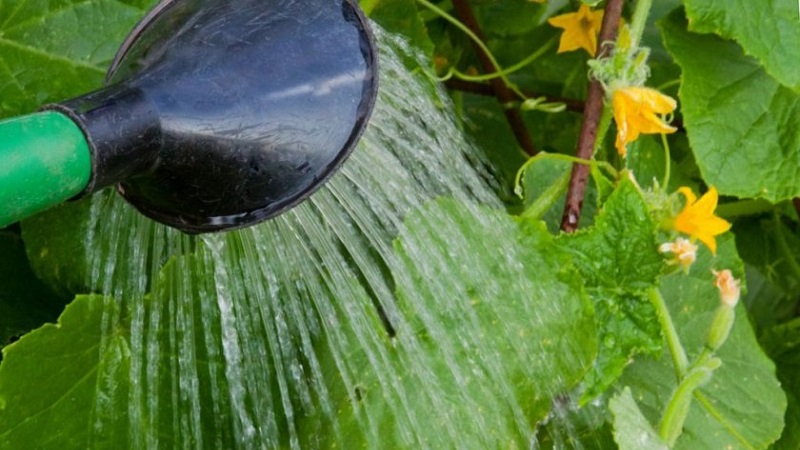
In July, the frequency of watering decreases... During this period, ovaries are formed. The plant no longer needs frequent feeding.
In August, the pumpkin continues to be watered, but in smaller volumes. This allows the fruit to store sugar and form a thick crust. One month before harvesting, pumpkin is no longer irrigated.
It can be useful:
How, when and how to feed a pumpkin
Irrigation of pumpkin at different periods of plant development
The frequency of watering the pumpkin varies depending on which stage of development the plant is in.... By following a few simple rules, you can increase your yield:
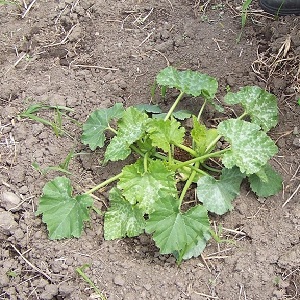 Landing in the ground... After the plant has been planted in the ground, it is watered 1-2 times a week. The average volume of water is 8 liters for each bush.
Landing in the ground... After the plant has been planted in the ground, it is watered 1-2 times a week. The average volume of water is 8 liters for each bush.- Emergence of seedlings... After the shoots appear, the plant is not watered for three weeks.
- Flowering and ovary formation... During this period, the pumpkin is capricious. Use only warm water. As soon as the ovaries begin to form, the plant is watered again. When irrigated with cold water, there is a chance that the ovaries will fall off. Remove all weeds before watering. Irrigation frequency - 1 time in 10 days, 12 liters for each bush.
- Fruit formation... The pumpkin continues to be watered. During this period, drip irrigation is suitable. This method prevents water from eroding the soil, and nutrients enter the rhizome. A month before harvesting, watering is completely stopped.
During the heat
When pumpkin grows outdoors, it needs abundant watering., especially in hot weather. High temperatures can destroy or ruin the entire crop. Therefore, during this period, it is important to monitor soil moisture.
If the plant begins to suffer from heat (leaves wither, the ground cracks, the stem tilts toward the ground), increase the frequency of watering. Do this gradually to avoid flooding the plant.
Reference. In hot weather, it is better to water the pumpkin in the evening or before sunrise. Then drops of water will not provoke burns on the leaves and stem.
In cold weather
In cool weather, the plant absorbs moisture better.... During this period, watering is continued, but not in such large quantities as in the heat. For watering, a manual irrigation method is used (using a watering can or a hose), otherwise you injure the bush.
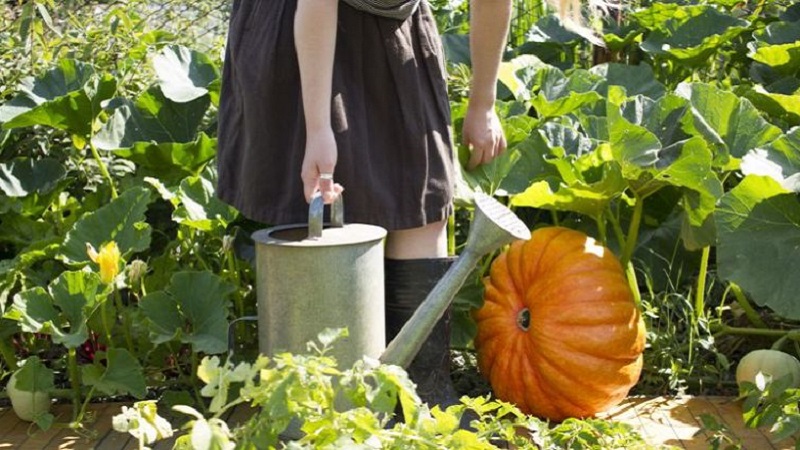
Irrigation methods
There are several ways that gardeners use to irrigate pumpkin.:
- manual;
- auto;
- semi-automatic.
Each method has its own pros and cons.
Manual
With the manual method improvised means are used: watering can, hose... This is the most time consuming and cheapest way to irrigate a pumpkin.
Important! The bushes cannot be watered with one strong stream, so special nozzles are used for the hose and watering can.
If the hose is used without a nozzle, then the gardener should worry about the pressure of the water, since the strong jet washes the soil. In this case, pinch the end of the hose to distribute the water in different directions.
Auto
Automatic is an easy but expensive way to water your plants. Gardeners install a special system for spraying water... The timer controls the watering time.
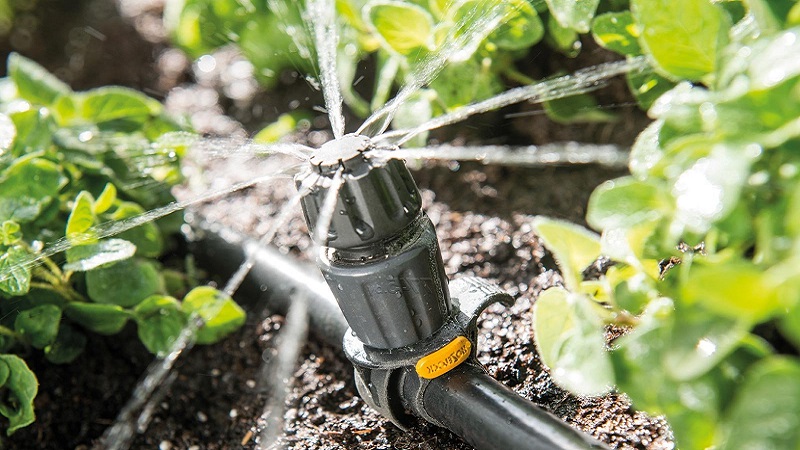
When using this method, you will need constant sources of electricity and water supply.... Piping is required. For small areas, such an expensive method will not work.
Semi-automatic
Most often, watering is carried out using this method. On the site, pipes are laid close to the plants. At the same distance, holes are made through which water will flow to the pumpkin.
Make sure that the water flows to the plant evenly... It should not wash out the rhizome or only touch the top.
Read also:
What should be the water
For a pumpkin, rain, spring or tap water is suitable.... As a last resort, use lake or river water. Let's take a closer look at what water and when it is better to irrigate:
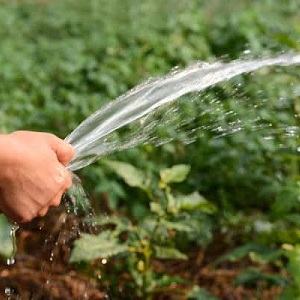 Rain... This type of water is best for pumpkin irrigation. It is soft in composition and has a beneficial effect on plants. Collecting water from industrial areas is not recommended. It contains a large amount of toxic substances.
Rain... This type of water is best for pumpkin irrigation. It is soft in composition and has a beneficial effect on plants. Collecting water from industrial areas is not recommended. It contains a large amount of toxic substances.- Spring... Such water is heated in the sun to the optimum temperature (+ 20-25 ° C) and settled. Due to the presence of useful components, the plant is nourished.
- Plumbing... The most accessible view. Such water is suitable for irrigation only if it is settled, and its temperature is + 20-25 ° С.
- Lake and river water... This water can only be used if it does not contain parasites.
Any water must settle for a day... This will help not only get rid of chlorine, but also determine the presence of toxic substances (a film forms on the water).
When to stop irrigation
Pumpkin watering stops at the end of August, a month before harvest... If this is not done, then the fruits will not be juicy, gardeners will not be able to get the planned harvest.
Tips and tricks from experienced summer residents
Each gardener has his own secrets of how to water plants that allow you to get a rich harvest:
- Do not stop watering the plant after the shoots have formed. In the worst case, the bush will not be able to grow properly. The root system will be weak.
- If the summer is rainy, then watering should be stopped. The soil is already well moistened, additional irrigation will lead to rotting of the plant.
- Despite all the watering recommendations, the frequency of irrigation depends on the weather conditions.The plant will always tell by its appearance whether it needs watering or not.
- When planting seeds, the holes are irrigated with warm water with mineral fertilizers. This method will allow the seed to sprout faster.
- Watering with cold water leads to the death of plants, disease with viral and fungal infections.
- Loosen the soil before watering. If this is not done, then the water will not be able to reach the rhizome.
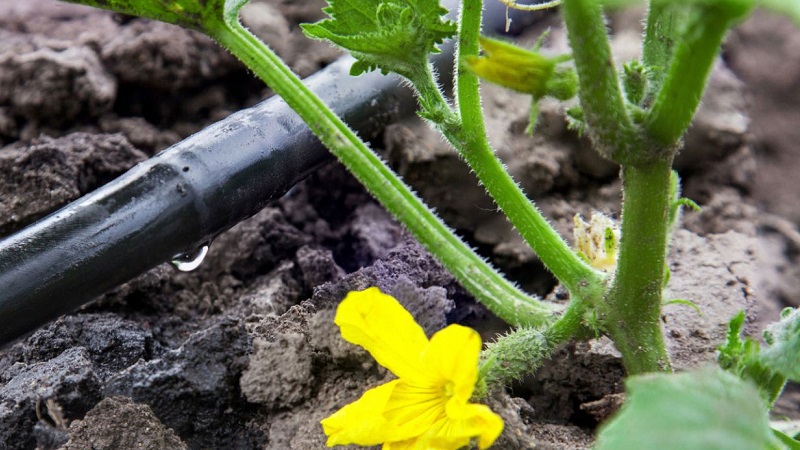
Common mistakes
Beginner gardeners most often encounter such errors when watering:
- Frequent watering. This can cause the fruit and stems to rot. In this case, the plant can no longer be saved. Make sure that the soil is not waterlogged.
- When watering the pumpkin, inexperienced gardeners direct the stream to the roots of the plant. This cannot be done. Such actions lead to rotting culture.
- Novice gardeners continue to water the plant until the very harvest, hoping that this way the fruits will be juicier. This is a misconception. If you do not stop watering, then the fruits will not be able to get the required amount of sugar and will be bland.
- Watering pumpkins in the heat during the daytime. There is a high probability of getting burned leaves and stems, leaf death and further death of the bush.
- Watering with a watering can without a nozzle. This can lead to the death of the plant.
Conclusion
Pumpkin is a moisture-loving plant and does not require frequent, but abundant moisture. Otherwise, the culture may start to rot and die.
Water for irrigation should always be warm, settled and clean. Use rainwater, tap water, or spring water. In extreme cases - lake or river. Choose a watering method based on climatic conditions and the size of the area where the crop grows.